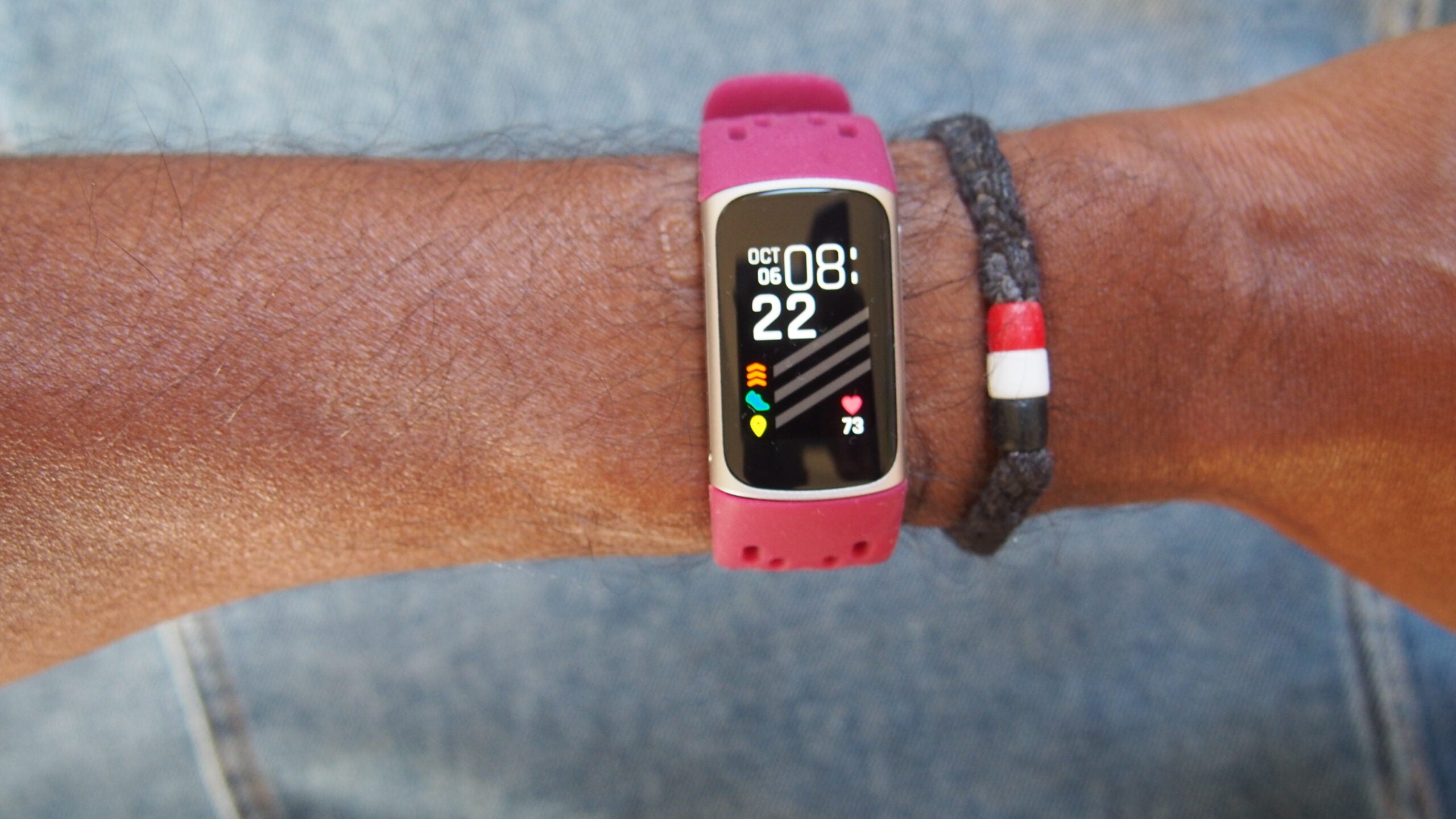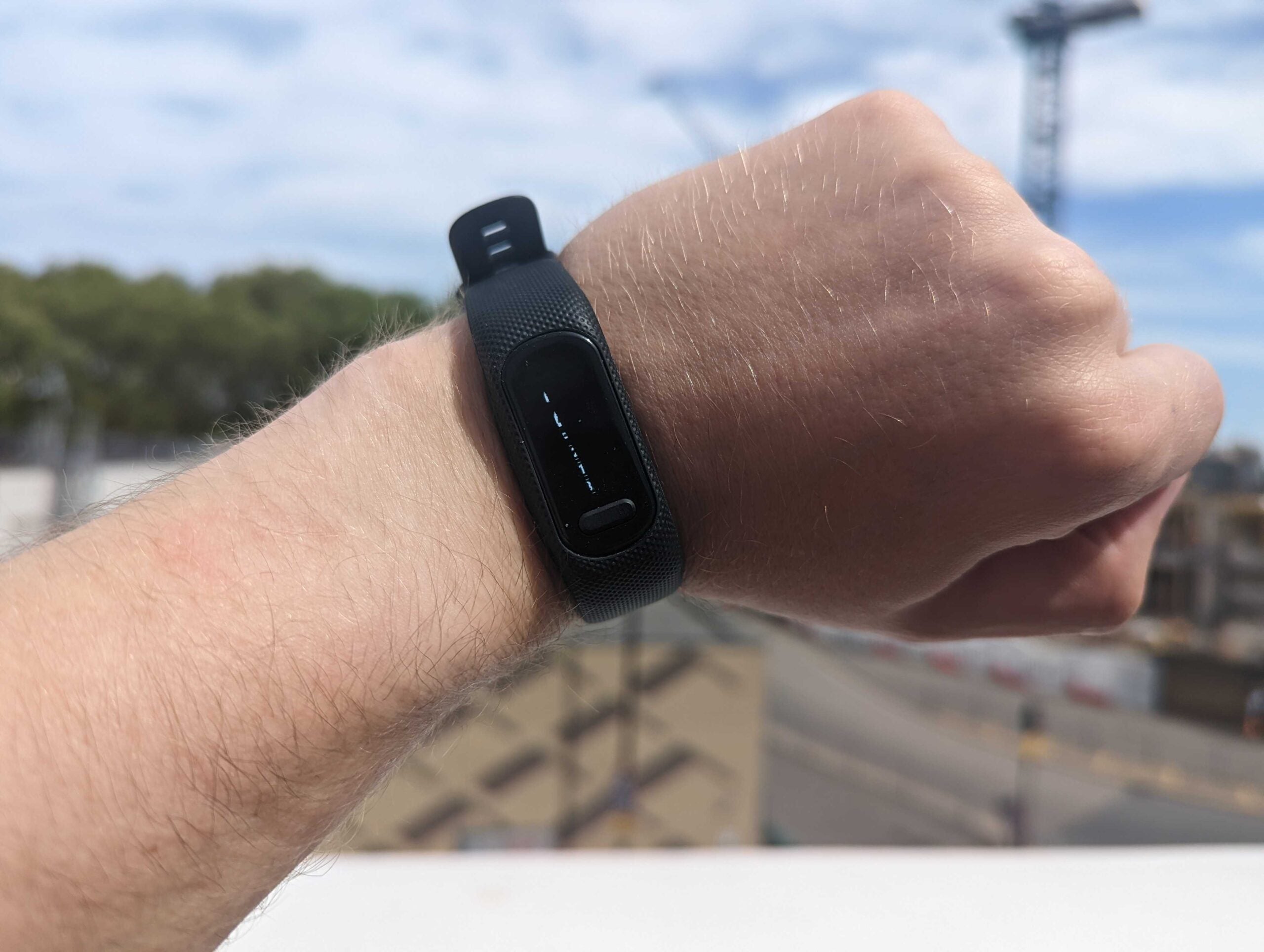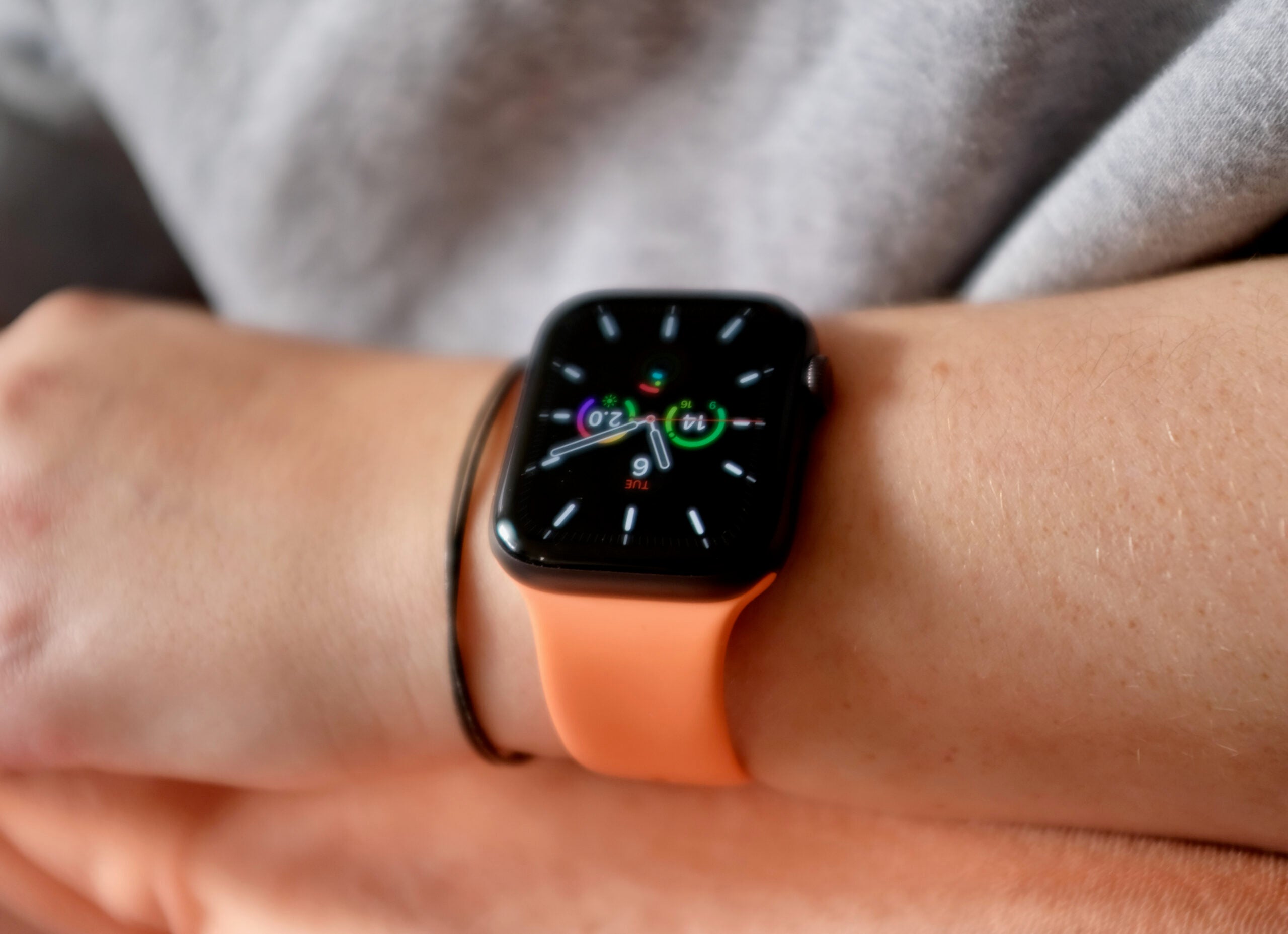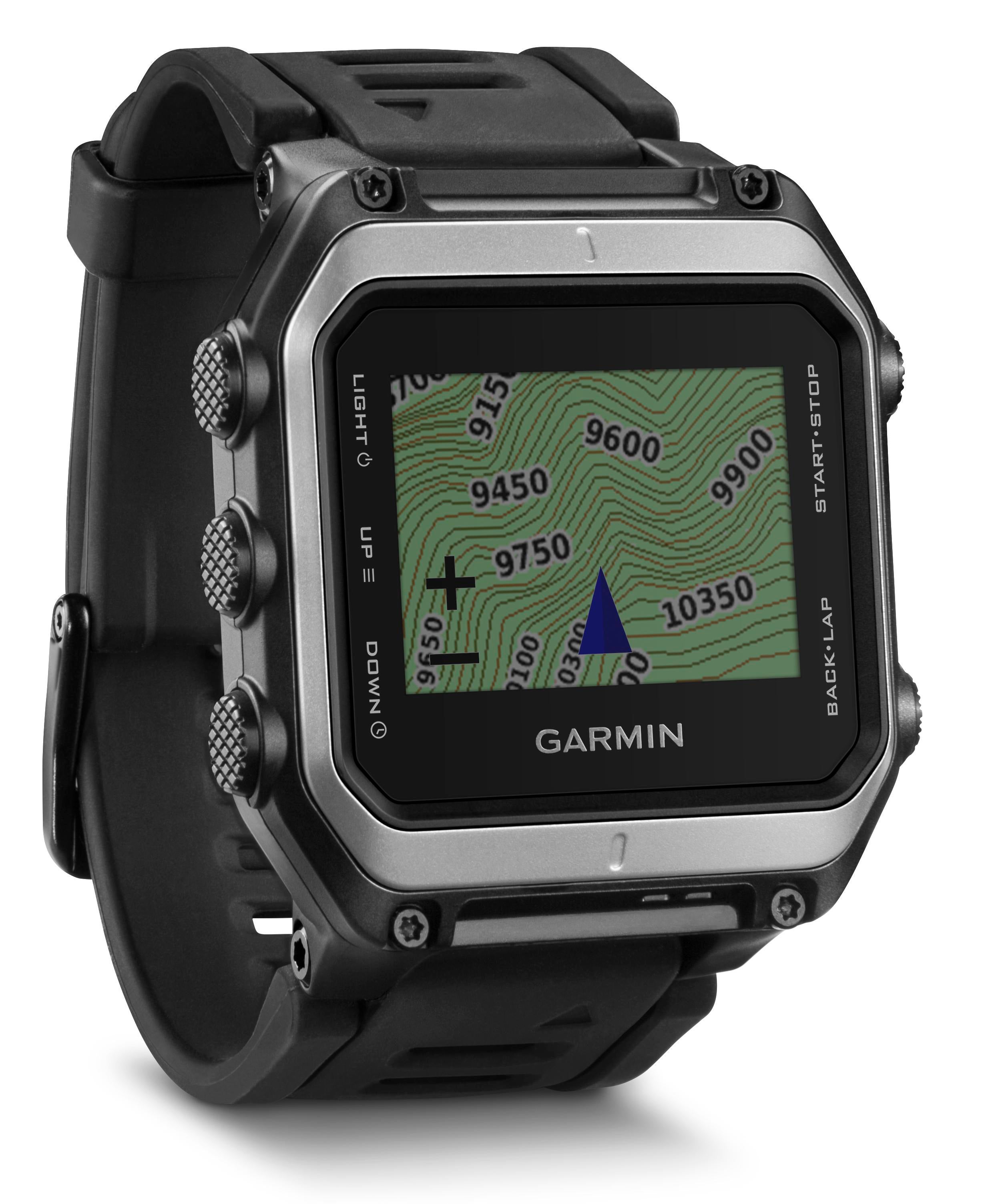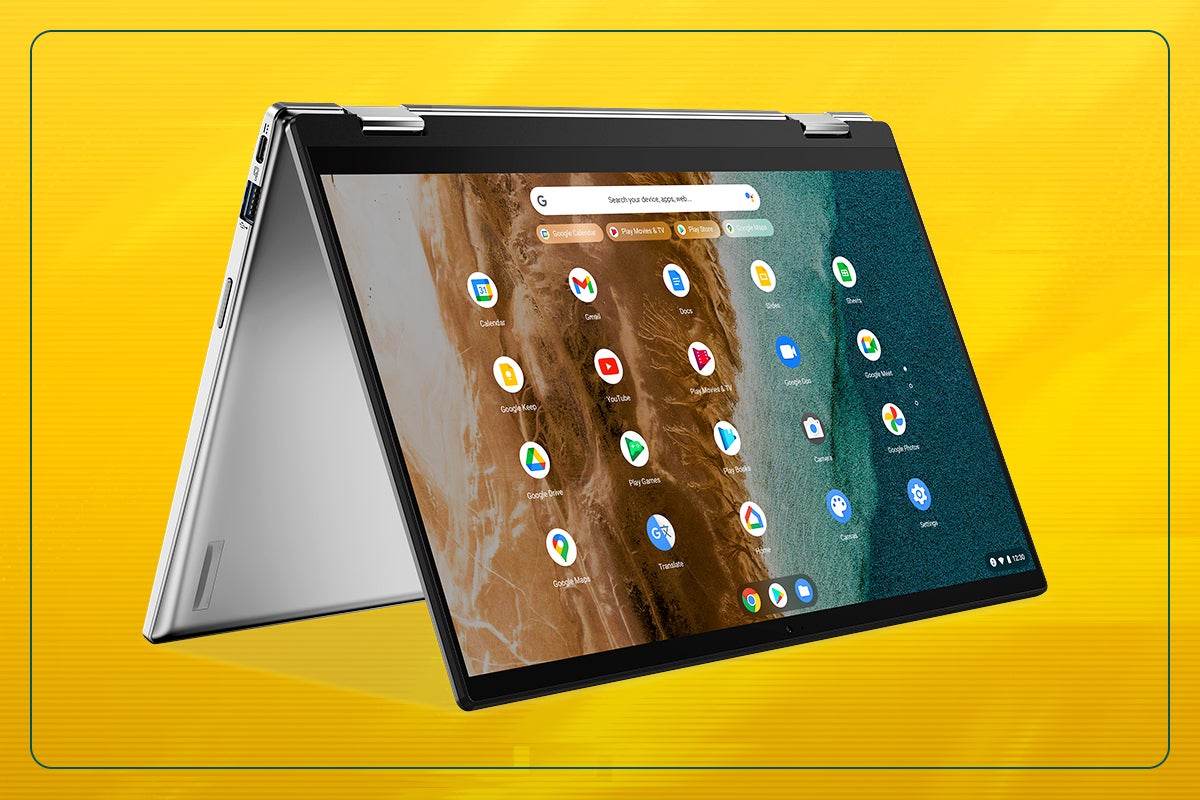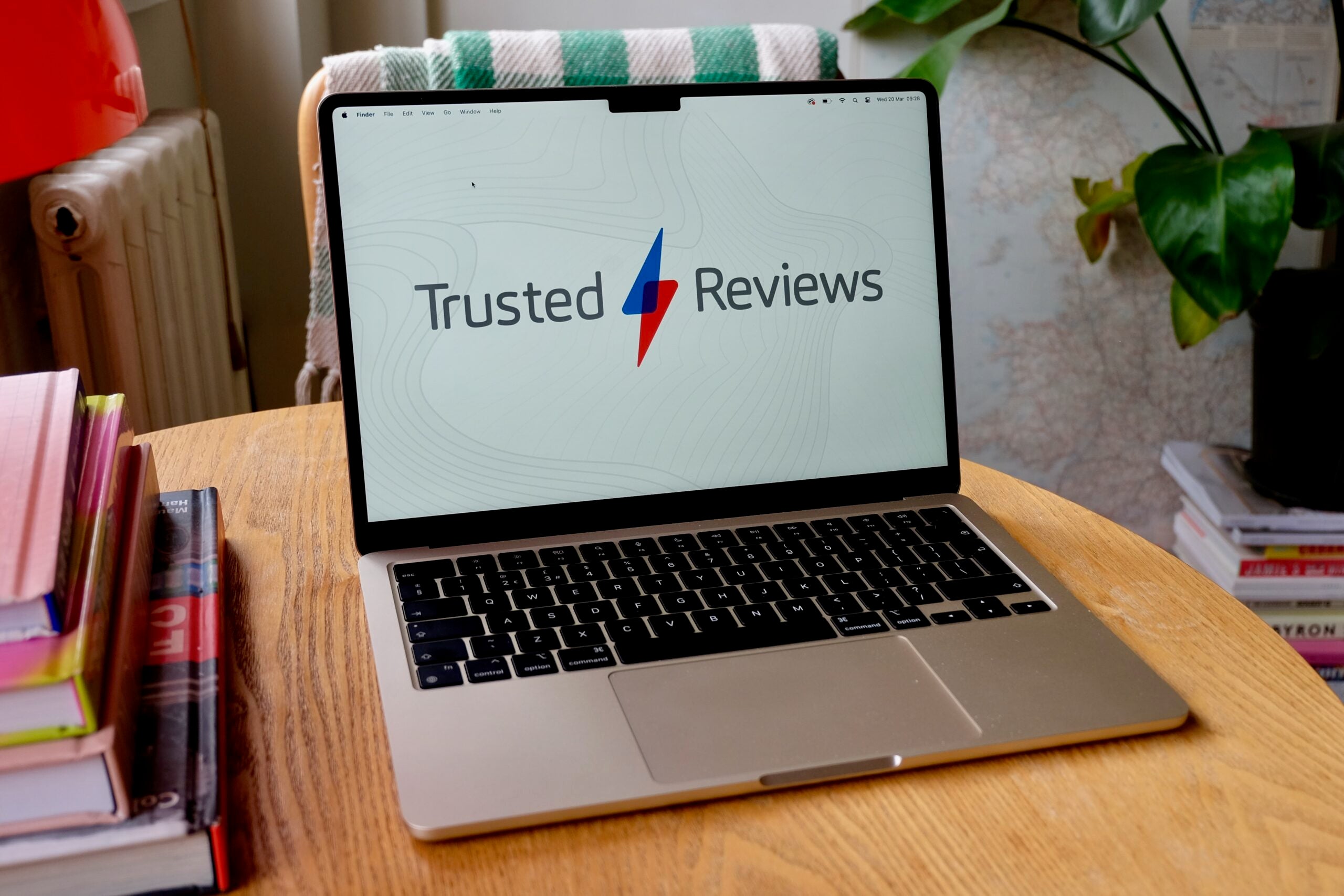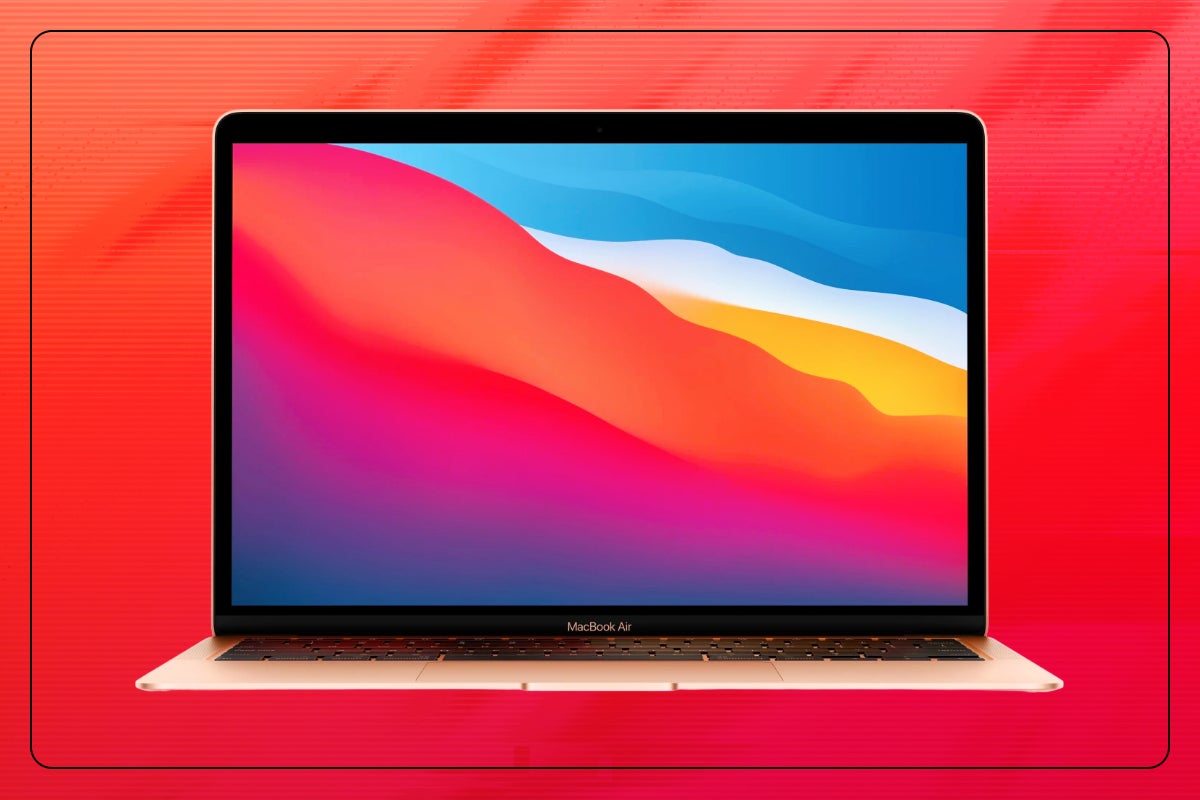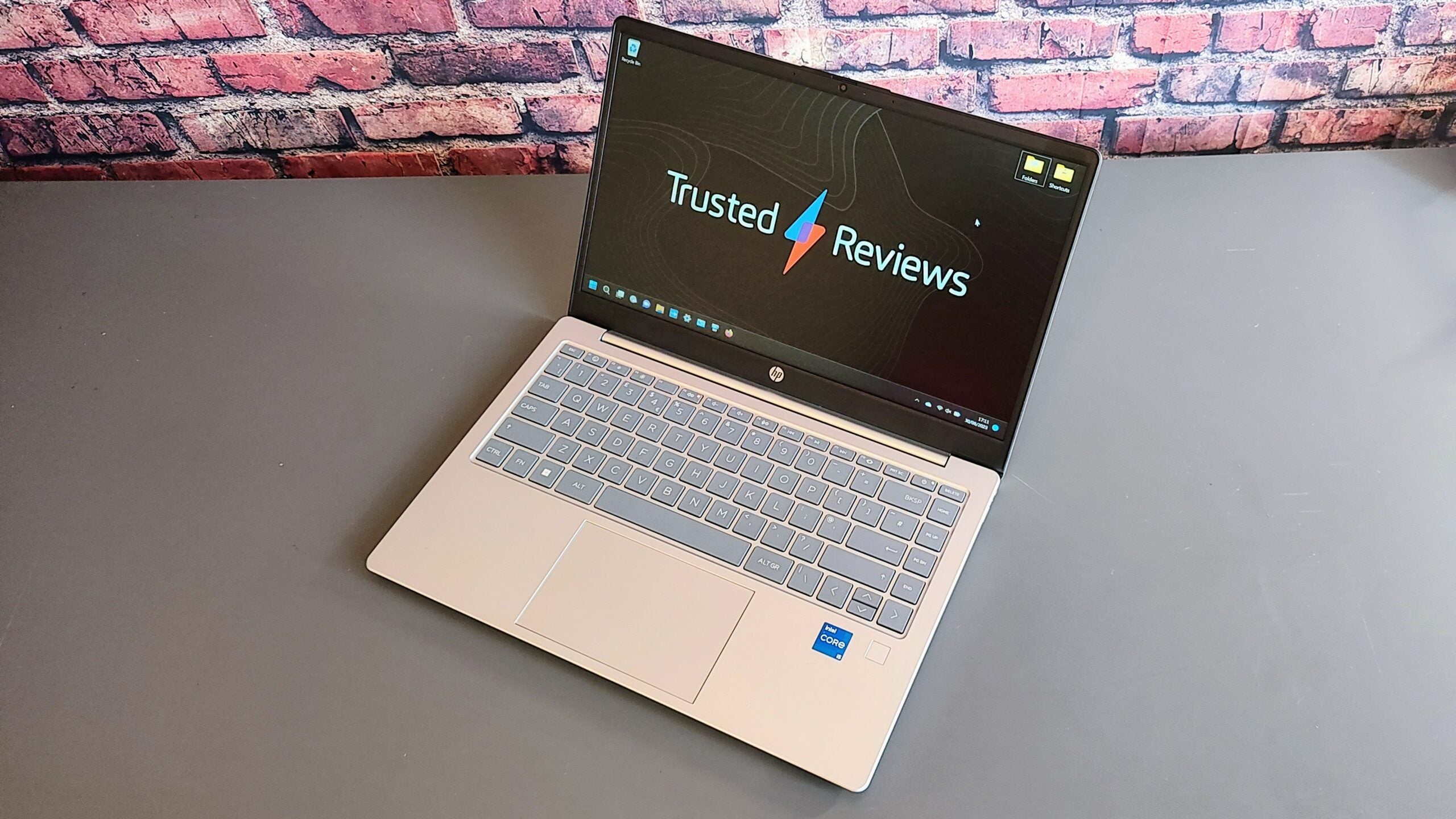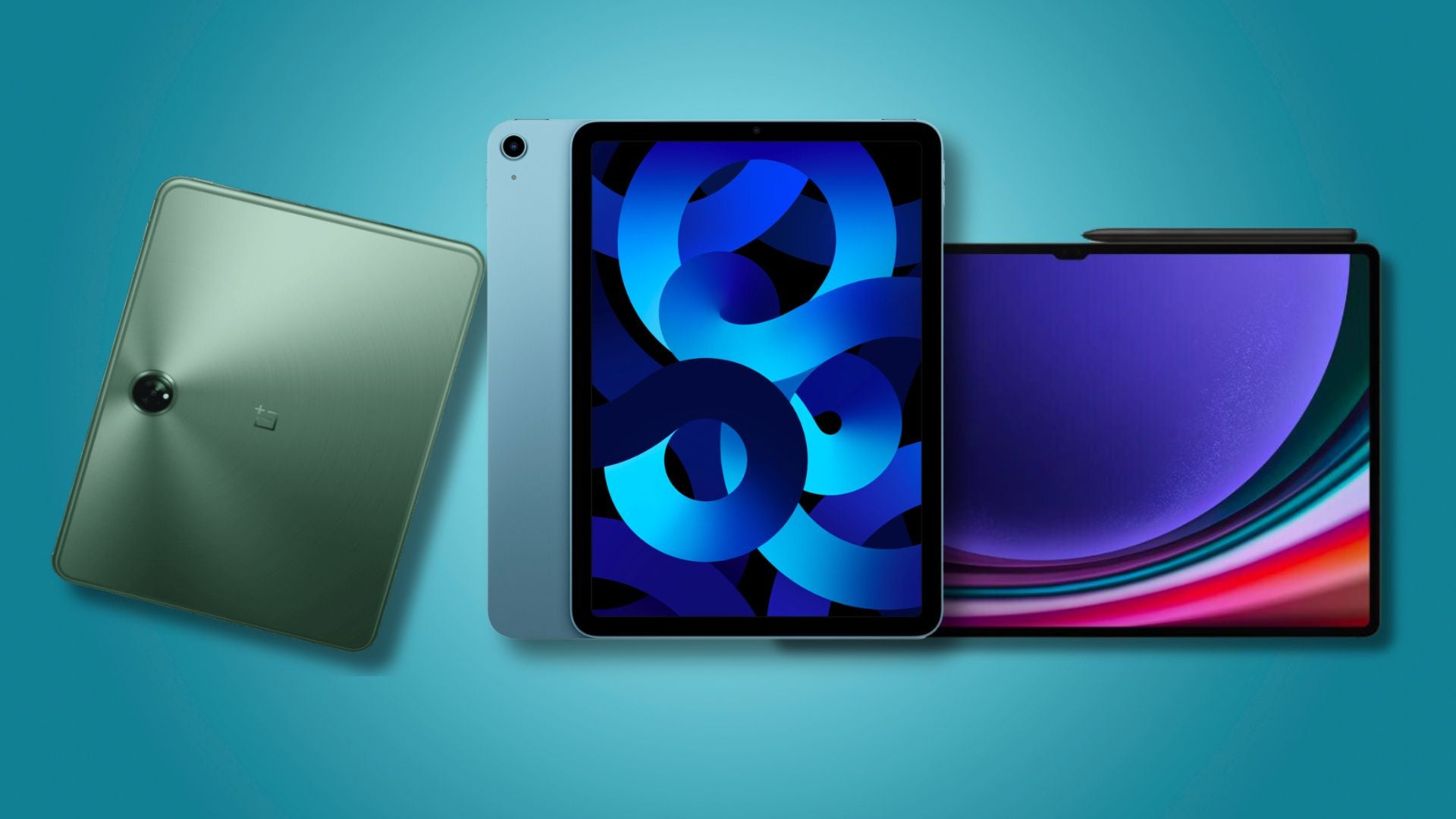Best Fitness Trackers 2024: Live healthier with these fitness wearables
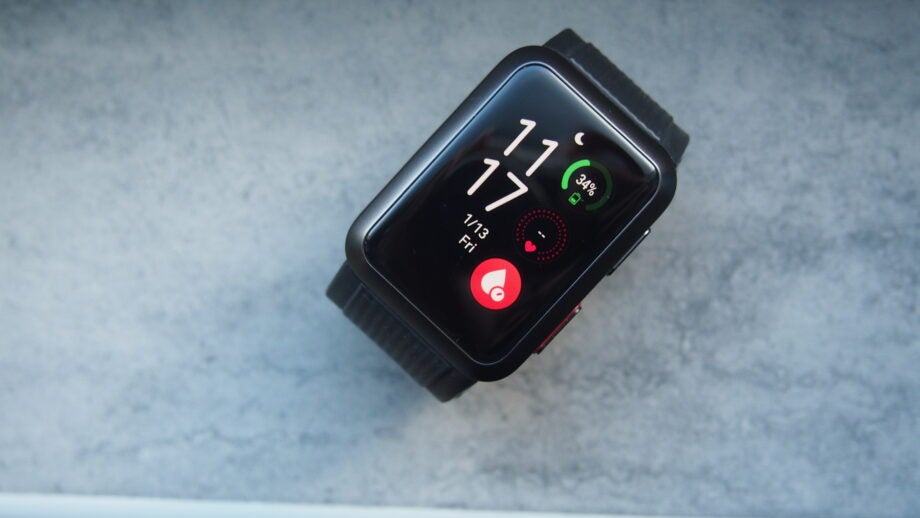
As the evenings get lighter and warm summer days draw ever closer, you might want to get yourself in good shape with the help of a fitness tracker that gives you the feedback and insight you need.
Having tested a very wide variety of fitness trackers with different price tags and features, we can confirm that a decent device can help with everything from motivating you to step outside walk more often to dramatically improving your personal bests.
But which one should you get? At the moment the market is flush with options. Just check out the stock list of any online retailer and you’ll see everything from affordable band design trackers for counting your daily steps and little else to uber-expensive GPS wearables made for hardcore triathletes who compete in all conditions.
Here to make sure you get a wearable that’s right for you, we at Trusted Reviews have created this guide detailing the top performing fitness trackers we’ve tested that you can buy in 2024.
Every tracker on this guide has been used by one of our team of reviewers for at least a week. During that time, we made sure to have tested every feature on offer to ensure they deliver accurate tracking data, decent battery life, a robust build quality, and good value for money.
Knowing that one size doesn’t fit all, we’ve also made sure to include a good variety of trackers that cover different markets and price points to give readers a full spectrum to suit their needs best.
If you do know what you’re after and are on the lookout for some more narrowly focused advice then you can also check out our best running watch, best Garmin Watch, best Fitbit and best smartwatch guides for more tailored ideas.
Which is the best fitness tracker?
- Best for serious athletes: Garmin Fenix 7 Pro – check price
- Best for iPhone owners: Apple Watch Series 9 – check price
- Most fashionable option: Garmin Vivomove Trend – check price
- The most discrete: Fitbit Luxe – check price
- Best for entry level athletes: Amazfit GTS 3 – check price
- Best value: Xiaomi Mi Band 6 – check price
- Best for cardio: Garmin Forerunner 955 solar – check price
- Best for Wear OS: Google Pixel Watch 2 – check price
- Best for blood pressure tracking: Huawei Watch D – check price
- Best ring-based fitness tracker: Ultrahuman Ring Air – check price
How we test
We use every fitness tracker we review as our primary wearable for at least a week – or longer, if the battery life lasts beyond that point or we need more time to trial its features.
During that time we will test it on a variety of different activities. These will range from basic step tracking, to how well it tracks runs, swims, cycling and more.
For distance tracking, we assess how accurately the device records runs on tracks we know the length of. We also evaluate the level of battery life lost per hour using features such as built-in or connected GPS. To check heart rate accuracy, we compare the results from the wearable to a dedicated HRM strap.
Next we combine the data recorded with our general experience of using the wearable day-to-day, revealing whether the device proved comfortable to wear, alongside any issues we may have encountered with unexpected bugs over the review period.
We then evaluate key metrics including app support, usability and battery life.
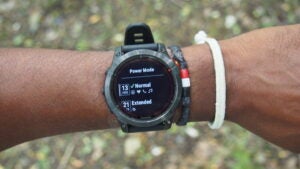 Best for serious athletes
Best for serious athletes
- Still great battery life
- Added map features
- Solid sports tracking
- Not a hugely different experience from the Fenix 7
- Heart rate sensor doesn’t offer radical improvements
- Improved MIP display just a touch brighter and clearer
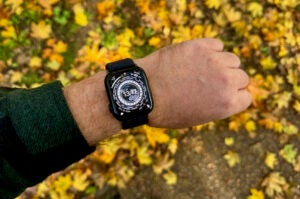 Best for iPhone owners
Best for iPhone owners
- Certain models made from recycled aluminium
- Faster Siri
- Accurate tracking
- Very bright screen
- Design remains the same
- Health data needs to be shown better
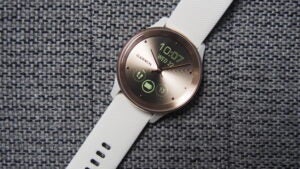 Best-looking
Best-looking
- Great look
- Well integrated digital display
- Impressive array of fitness and wellness features
- Handy wireless charging
- Fiddly to get to some sub-menus
- Not your typical big Garmin battery life
- Higher quality displays on other Vivomove watches
- Not much cheaper than Vivomove Style
 Most discrete
Most discrete
- Decent-quality AMOLED screen
- Good for resting heart rate monitoring
- Nice straps available
- Works well for sleep tracking
- Notifications feel cramped
- Connected GPS support isn’t always reliable
- Features hidden behind Premium subscription
- No payment support
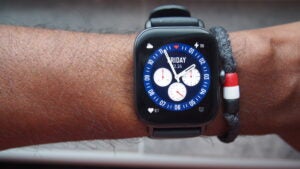 Best for entry-level athletes
Best for entry-level athletes
- Great screen
- Good features for the price
- Sleek design
- Heart rate performance
- Zepp OS lacks big-name apps
- Poor battery life when all features are in use
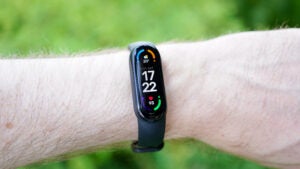 Best value
Best value
- Extremely good value
- Strong battery life
- Excellent display
- Sleep tracking isn’t great
- Clunky app
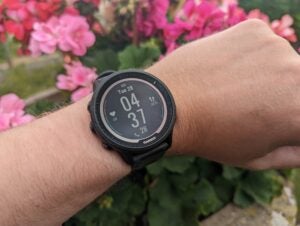 Best for cardio
Best for cardio
- Snappy and accurate multi-band GPS connectivity
- Comfortable discrete design
- Local music playback
- Limited smartwatch functionality
 Best for Wear OS
Best for Wear OS
- Battery life is now workable
- Outstanding HR accuracy
- Design is still great for 24/7 wear
- Battery life still not great or predictable
- Only available in one case size
- Fitbit Premium required for some stats
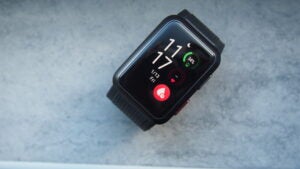 Best for blood pressure tracking
Best for blood pressure tracking
- Easy to take blood pressure readings
- Accurate ECG readings
- Week-long battery life
- HarmonyOS not at its best
- Not the sleekest design
 Best ring-based tracker
Best ring-based tracker
- Lightweight, understated design
- Great health and fitness tracking
- Consistent 4-day battery life
- No automatic workout detection
- Features can differ between iOS & Android apps
- Takes a while to charge

Garmin Fenix 7 Pro
The best for serious athletes
Pros
- Still great battery life
- Added map features
- Solid sports tracking
Cons
- Not a hugely different experience from the Fenix 7
- Heart rate sensor doesn’t offer radical improvements
- Improved MIP display just a touch brighter and clearer
The latest high-end Fenix watch from Garmin might not be a massive overhaul from the original Fenix 7, but it’s still a great wearable nonetheless and deserving of our fitness tracker top spot.
Right off the bat, the 7 Pro builds upon the unbelievable foundations of its predecessor but this time around it adds an improved heart rate sensor and upgraded mapping features to give you more insights when you’re out on a run.
With the Fenix 7 Pro to hand, GPS maps are now given more detail via relief shading which better represents the topography of whatever route you’re on, which is handy if you’re exploring an area that you’re not too familiar with. There’s also the new Up Ahead feature which highlights points of interest on any given route, so the 7 Pro will alert you when essential spots like water/aid stations or tricky turns are on the horizon.
As you’d expect from a Garmin watch, the Fenix 7 Pro is built to withstand some serious damage, boasting a ruggedised fibre-reinforced chassis with a titanium backing. Plus, with 10ATM water resistance, you can take the Fenix 7 Pro out in open waters without any worry, so if you have any triathlons in the calendar then you’ll be covered.
There’s even a dedicated flashlight built into the watch, so you won’t have to bring a torch with you if you plan on running any trails after the sun’s gone down. Even with all of these features, the Fenix 7 Pro doesn’t leave you wanting on battery life, with the ability to get up to 22-days of use thanks to the device’s solar charging capabilities.
The key thing to bear in mind is that the Fenix 7 Pro has an RRP of £749.99, so unless you plan on making the most of it with a schedule full of marathons and events, then you’re better off opting for something cheaper. For the hardcore athletes out there however, it’s easily the best wearable you can get right now.
Reviewer: Michael Sawh
Full review: Garmin Fenix 7 Pro Review

Apple Watch Series 9
The best for iPhone owners
Pros
- Certain models made from recycled aluminium
- Faster Siri
- Accurate tracking
- Very bright screen
Cons
- Design remains the same
- Health data needs to be shown better
If you’re an iPhone owner on the market for a fitness tracker that’s perfectly optimised to make the most out of iOS and all of Apple’s in-house features then the Apple Watch is your best bet. This has been the case for a long time but with each iteration, the experience just gets even better.
The Apple Watch Series 9 is the latest in a long line of Apple Watches to get our recommendation, not only because it’s only of few fitness trackers to offer such high levels of iOS integration, but because it’s simply leaps and bounds ahead of the competition in several key areas. For starters, automatic workout tracking is incredible on the Apple Watch Series 9, having a key understanding of when you start to break out a sweat and when a workout is over based on your movement.
Apple Rings also does a great job of breaking down a day’s exercise into three-key components, although it isn’t quite as forgiving as Fitbit’s Active Zone Minutes, pestering you to hit your workout goals every single day as opposed to working around your schedule and hitting them on a weekly basis.
Still, there are no shortage of workouts to be tracked on the Apple Watch and more are added year after year, so it’s a great investment for anyone already synced up in the Apple ecosystem.
Fitness aside, it offers a great smartwatch experience for iPhone users with a high level of interoperability with iPhones and other Apple products, and new features like Double Tap to interact with the Watch without tapping the screen keep Apple’s wearable competitive in a growing market.
Reviewer: Max Parker
Full review: Apple Watch Series 9 Review
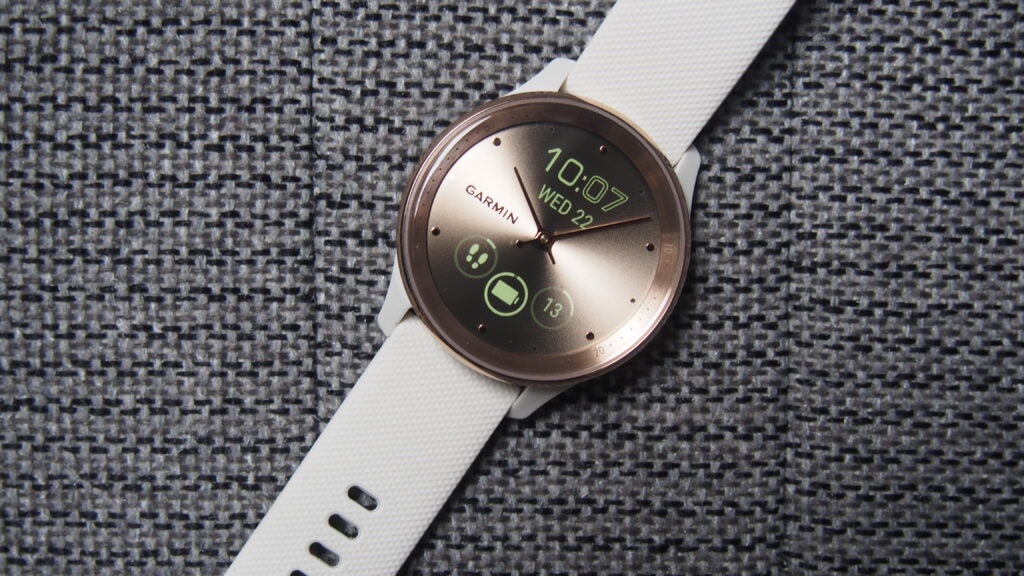
Garmin Vivomove Trend
The best for fashion conscious buyers
The best for fashion conscious buyers
Pros
- Great look
- Well integrated digital display
- Impressive array of fitness and wellness features
- Handy wireless charging
Cons
- Fiddly to get to some sub-menus
- Not your typical big Garmin battery life
- Higher quality displays on other Vivomove watches
- Not much cheaper than Vivomove Style
Even though Garmin is one of the most established brands in the world of fitness tracking, the company isn’t exactly a trendsetter when it comes to making fashionable wearables. The average Garmin watch is definitely feature-rich, but form tends to get left on the wayside in favour of function – that is until the Garmin Vivomove Trend hit the scene.
This stylish wearable combines the trappings of a traditional analogue watch with the fitness tracking features that have made Garmin so successful. The tracking in question is shown on a display that sits beneath the watch’s physical dials, so you can discreetly start your next workout or check up on a few notifications.
As an added bonus, the Garmin Vivomove Trend is also one of the few wearables out there to support wireless charging, so if you have a Qi wireless charging station to hand then you can pop the Vivomove Trennd on it and get on with your day.
The watch also does a great job at keeping an eye on your overall wellness and mental health, with stats such as heart rate variability and respiration levels that can be key indicators of overall stress levels.
Reviewer: Michael Sawh
Full review: Garmin Vivomove Trend Review
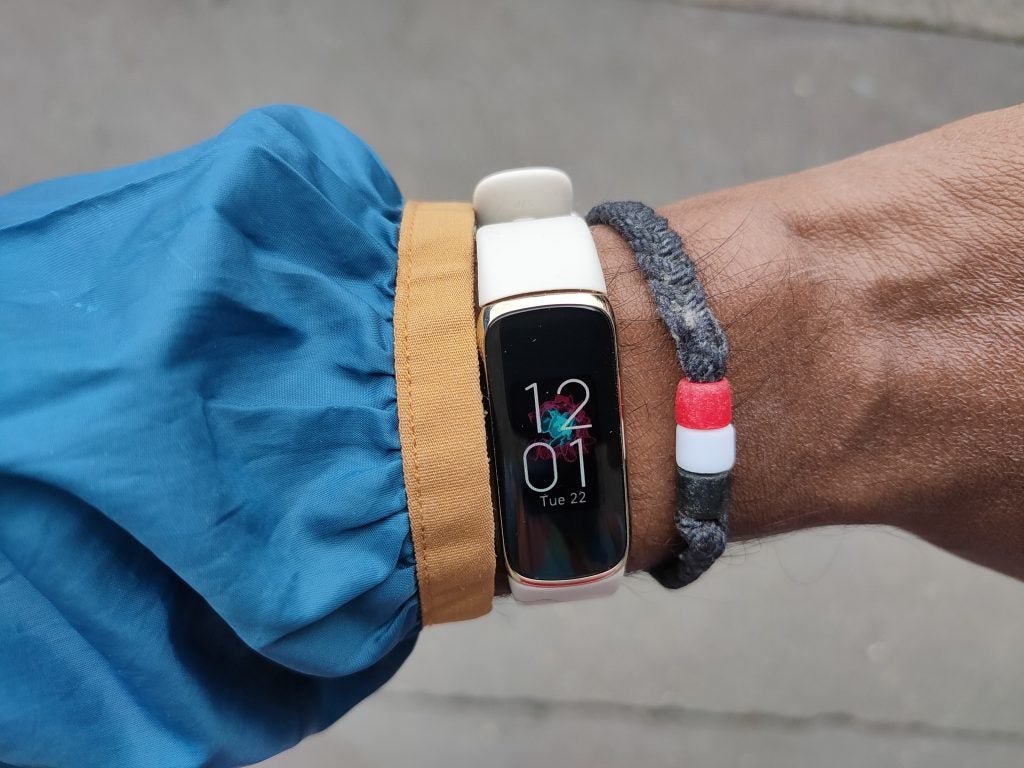
Fitbit Luxe
The most discrete
Pros
- Decent-quality AMOLED screen
- Good for resting heart rate monitoring
- Nice straps available
- Works well for sleep tracking
Cons
- Notifications feel cramped
- Connected GPS support isn’t always reliable
- Features hidden behind Premium subscription
- No payment support
Fitness trackers tend to be split into watch and band form factors. Watches offer a larger screen to interact with and generally have more developed hardware. But for entry level athletes, or people that don’t want a large wearable on their wrist 24/7, there’s a lot to be said for the smaller band design.
If that sounds like the sort of wearable you’re after, then the Fitbit Luxe is the best option we’ve reviewed at the moment.
The Luxe comes with a solid array of band options and its colorful AMOLED panel is the brightest and sharpest we’ve seen on a band design fitness tracker its price. This made it much more pleasant to use than many of the competing band design trackers we’ve used recently, including the Garmin Vivosmart 5, which has a more basic black and white display.
The key selling point here is the Fitbit OS easy to understand and use software and navigation system which offers basic, but easily digestible snippets of workout data that are really good at motivating, rather than intimidating, users. This makes it a really solid option for people who are just getting started or just care about boosting their daily step count. The 5 day battery life we enjoyed during testing also means you’ll generally get through the work week before needing to give it a top up charge.
The only downside is that we found it’s not terribly well suited to even semi-serious athletes, with Fitbit locking the more in-depth data regular runners need behind a paywall and its connected GPS providing less accurate distance tracking than we’d like.
Reviewer: Michael Sawh
Full review: Fitbit Luxe Review
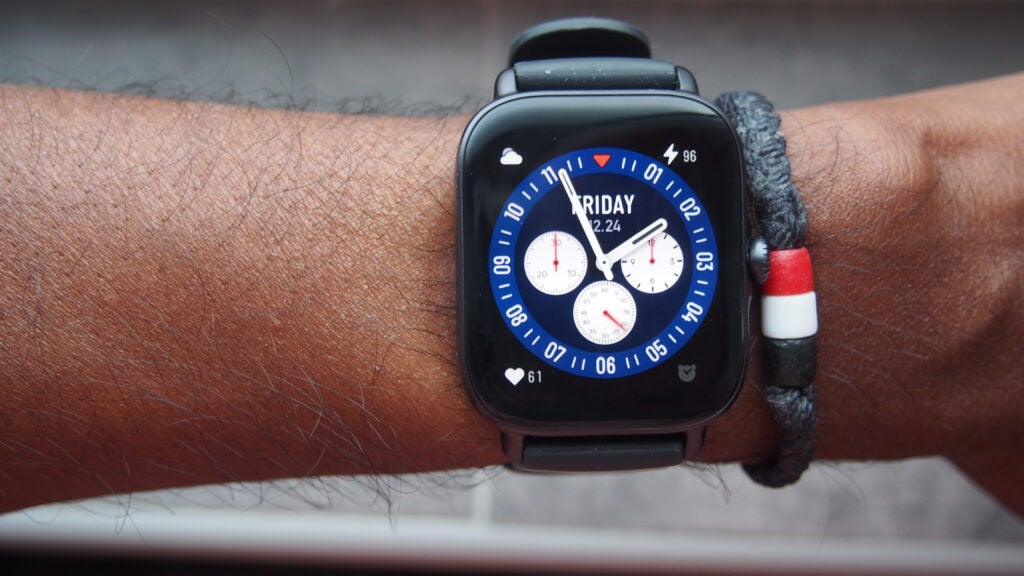
Amazfit GTS 3
The best for entry level athletes
Pros
- Great screen
- Good features for the price
- Sleek design
Cons
- Heart rate performance
- Zepp OS lacks big-name apps
- Poor battery life when all features are in use
If you’re an entry level athlete looking for a reliable fitness tracker that can handle more than basics, like step count and your morning exercise bike ride then the Amazfit GTS 3 is a solid choice and our current recommendation.
Out of the box, the GTS immediately impressed our reviewer, with it featuring a similar, premium looking design to the Apple Watch despite costing a fraction of the price. The aluminium alloy used in the chassis feels rugged and we’re big fans of its physical crown control which can be used to power the screen up and navigate menus is wonderfully intuitive to use.
The AMOLED screen is also wonderfully bright and remained legible when we used it to track our runs outside, during very bright summer days.
It’s also one of the only wearables at this price we’ve tested to offer accurate distance tracking without being paired to a smartphone, with it featuring an inbuilt chip that supports five satellite systems, including GPS. Testing it against the Fenix 7 we were surprised how well it performed with it never being more than 0.3km out of sync with the more premium wearable.
We were also pleased by the appearance of a few other health tracking sensors traditionally seen on more premium trackers, like an ECG. This let the tracker deliver estimates for more serious metrics, like VO2 Max, that you simply don’t get on most trackers at this price. The only downside is that the heart rate sensor and data isn’t quite as uniform and reliable as what we detected on the Fenix 7, so we wouldn’t recommend it to serious athletes.
Reviewer: Michael Sawh
Full review: Amazfit GTS 3 Review
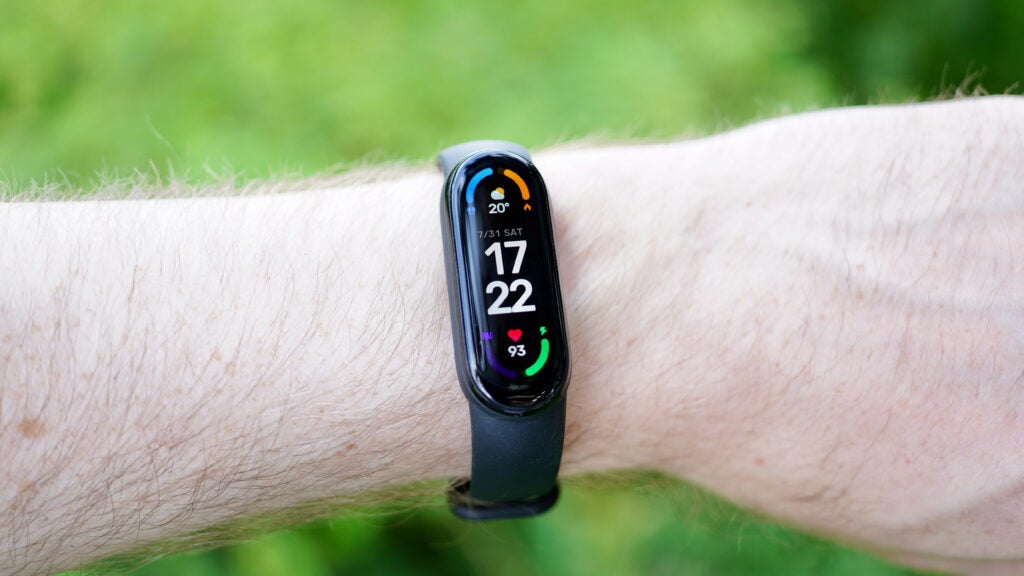
Xiaomi Mi Band 6
The best value
Pros
- Extremely good value
- Strong battery life
- Excellent display
Cons
- Sleep tracking isn’t great
- Clunky app
If you’re on the strictest of budgets but still want a decent tracker for the basics, then the Xiaomi Mi Band 6 is the best value option we’ve tested.
Despite costing less than $50/£50 the tracker has a colorful, sharp AMOLED screen and offers a waterproof design that let our reviewer comfortably wear it 24/7 with zero irritation.
Battery life also proved sold with it uniformly lasting at least a full week, even with power hungry functions like constant heart rate tracking.
If you just want the basics it also performs well, considering its price. Our tests showed that its three-axis accelerometer and a three-axis gyroscope were good enough to offer suitably reliable step counting and heart rate monitoring for basic things, like walking and treadmill running.
The main downside is that it doesn’t have an inbuilt GPS. During our tests, we found this meant that, even when connected to a phone’s GPS, distance tracking was nowhere near as reliable as what we got on the Fitbit Luxe and Vivosmart 5.
Reviewer: Jon Mundy
Full review: Xiaomi Mi Band 6
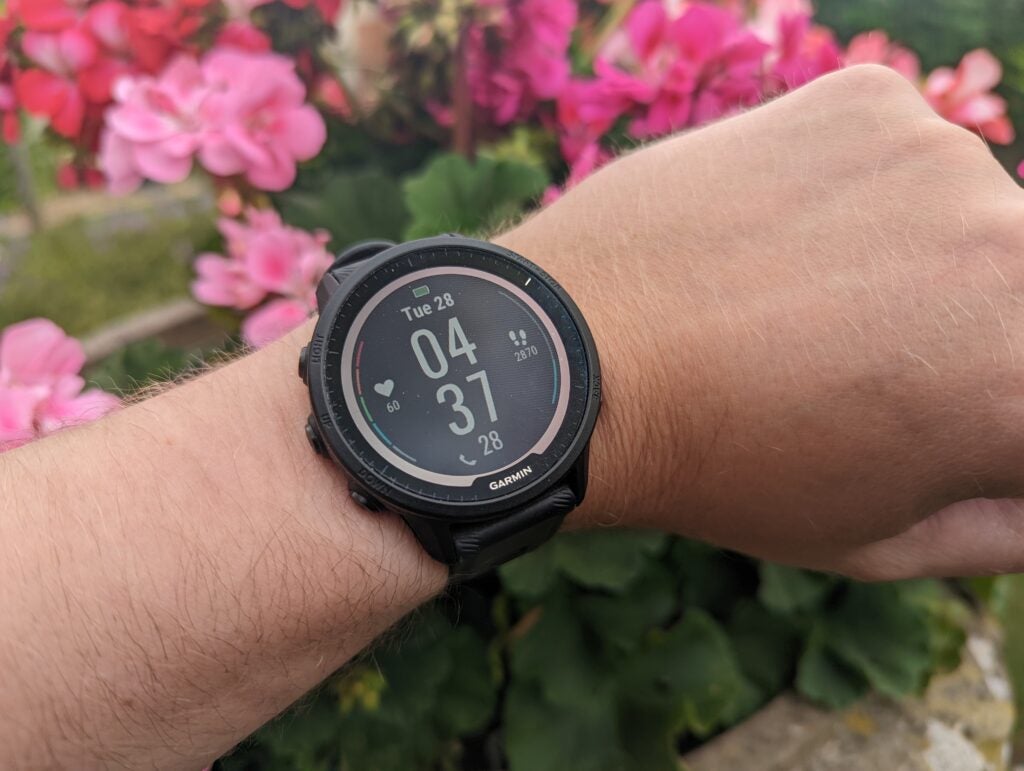
Garmin Forerunner 955 Solar
The best for cardio
Pros
- Snappy and accurate multi-band GPS connectivity
- Comfortable discrete design
- Local music playback
Cons
- Limited smartwatch functionality
If you don’t need an ultra rugged design that’ll survive the odd accidental encounter with a climbing wall or ocean rock then the Forerunner 955 is the best premium fitness tracker we’ve tested.
The Forerunner is a smaller cardio-focused wearable from Garmin that shares a lot of the best features seen on the more premium Fenix 7. This potent combination seriously impressed our reviewer during testing.
With it being the first 9-series Forerunner we’ve tested to feature multi-band GPS, the watch offered top-tier distance tracking accuracy. As well as locking a connection in seconds, the watch proved incredibly accurate during our 5km run tests. Running around a track we know is 5.3km, the watch offered a maximum variance of just 0.1km, which is excellent.
Add to this its local map support, which let us get turn-by-turn directions on routes we didn’t know and inbuilt music support for both local and Spotify/Deezer and it becomes an easy recommendation at a hardware level.
But what truly sets it apart from competing devices, like the Polar Vantage V2 and its ilk, is its advanced post workout and training analytics. Unlike some brands, such as Fitbit, Garmin offers users complete access to their workout and health data free of charge. So, like the Fenix you get nicely uniform VO2 Max estimates, SpO2 readings and guidance on how effective your workouts have been. But as an added bonus the 955 can also factor races and events you’ve added to your calendar to the coaching advice it gives.
This, plus new HRV and Training Readiness metrics make it great at helping avoid overtraining. The latter is a custom feature that tells you how well-prepared your body is to train. What’s great is that it also tells you why you may not be in an optimal state for a run. Our tester was frequently told to get more sleep ahead of his next training session and race, an insight that helped him change his routine to improve results.
Reviewer: Alastair Stevenson
Full review: Garmin Forerunner 955 Review
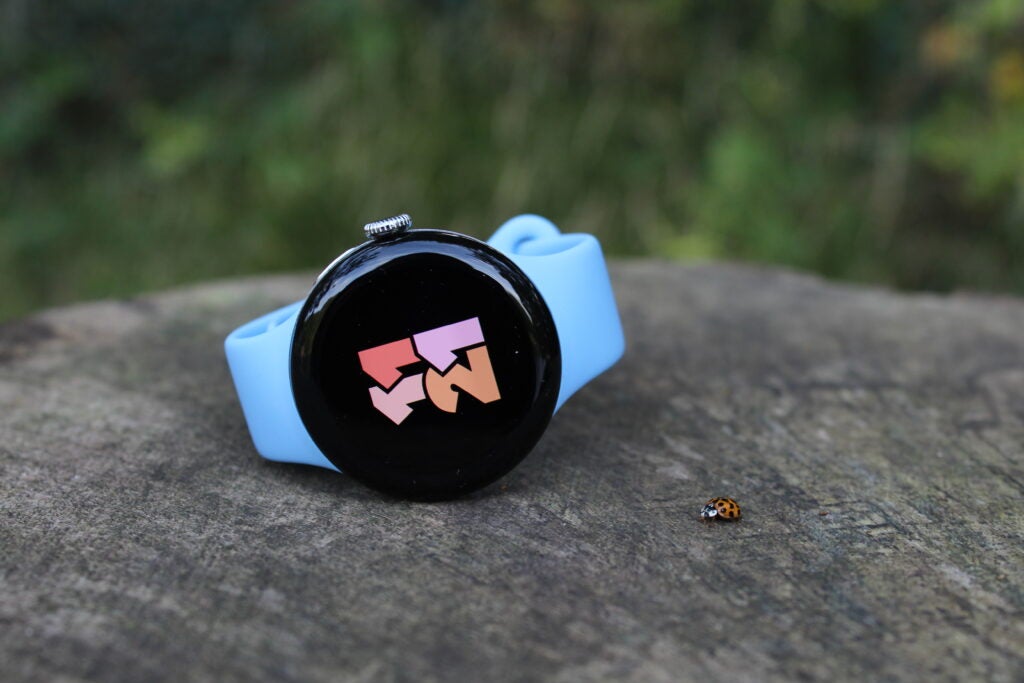
Pixel Watch 2
The best Wear OS tracker
Pros
- Battery life is now workable
- Outstanding HR accuracy
- Design is still great for 24/7 wear
Cons
- Battery life still not great or predictable
- Only available in one case size
- Fitbit Premium required for some stats
Unlike how it was even just three or four years ago, there’s now an abundance of great Wear OS smartwatches that excel in fitness tracking. The Galaxy Watch 5 Pro and the TicWatch Pro 5 are just some examples but for our money, it’s the new Pixel Watch 2 that’s the best bet for most people.
Aside from running the latest version of Wear OS from the get-go, the Pixel Watch 2 has a massive ace up its sleeve in the form of Fitbit integration. By default, the Pixel Watch 2 tracks your workouts via the Fitbit Wear OS app, allowing it to easily sync up with the Fitbit app on your smartphone.
While the likes of Garmin and Coros offer a bit more for seasoned athletes, Fitbit’s approach is far more geared towards those who are just starting out on their fitness journey, or are simply interested in implementing better habits for a healthier lifestyle.
Part of the reason for this is that the Fitbit app tracks your Active Zone Minutes on a weekly basis, which makes a lot more sense for most working adults and saves you from any guilt during those busier days when it’s just impossible to get in a workout.
Beyond exercising, the Fitbit tracking can also offer up a sleep score each day to let you know how well you’ve rested, giving you a good indication as to whether your body is ready to take on a difficult workout.
It also helps that the Pixel Watch 2 has an improved heart rate sensor over its predecessor, which we noted as throwing our far more accurate results this time around, which is particularly handy for keeping an eye on your heart rate zone during a workout.
As you might expect from a smartwatch, there’s plenty of functionality beyond the fitness tracking experience and this device in particular benefits from a seamless integration with Google’s own-brand apps. If you have a Pixel phone then the Pixel Watch 2 makes for a solid accessory.
Reviewer: Conor Allison
Full review: Pixel Watch 2 review
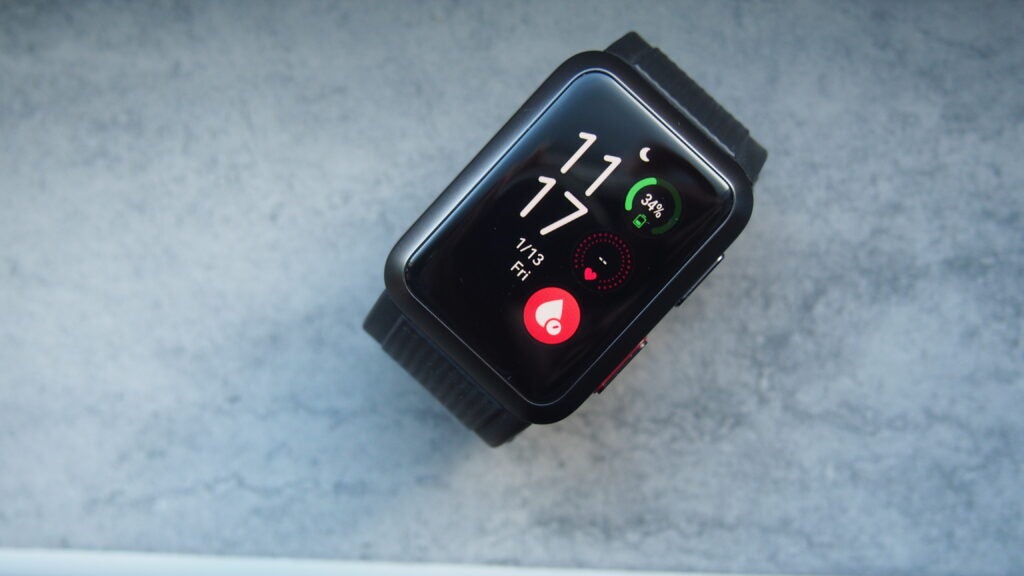
Huawei Watch D
The best blood pressure tracker
Pros
- Easy to take blood pressure readings
- Accurate ECG readings
- Week-long battery life
Cons
- HarmonyOS not at its best
- Not the sleekest design
With plenty of affordable fitness trackers and high-end smartwatches to its name, Huawei is no stranger to the wearables market but it has still managed to deliver something new and exciting in the Huawei Watch D.
Blood pressure tracking, while an important metric in the medical community for judging one’s overall bill of health, has yet to take off on the consumer wearables market. This hasn’t perturbed Huawei however, as the Watch D can expand and contract its unique watch band to conduct a blood pressure test from your wrist.
Beyond its capabilities in the realm of blood pressure tracking, the Watch D can also offer fairly accurate ECG tests to pick up any signs of arrhythmia, the presence of which could be indicative of underlying health issues.
As a cherry on top, the Huawei Watch D also benefits from a week-long battery life so that you can cruise through a fairly substantial workout routine before needing to top the device up.
Working against the Watch D is the fact that it doesn’t depict Huawei’s HarmonyOS in the best light. If you want to see the full extent of Harmony OS’s capabilities then you’re better off checking in on one of Huawei’s more premium smartwatches like the Huawei Watch 3.
The Watch D isn’t much of a looker either, so if you’re in the market for a fitness tracker that also doubles as a fashionable wearable for night out then unfortunately, this isn’t it. Still, if you can look past its industrial design and less than brilliant interpretation of HarmomyOS then there’s still plenty to get excited about, not the least because it currently leads the charge in blood pressure tracking on the go.
Reviewer: Michael Sawh
Full review: Huawei Watch D review

Ultrahuman Ring Air
Best ring-based fitness tracker
Pros
- Lightweight, understated design
- Great health and fitness tracking
- Consistent 4-day battery life
Cons
- No automatic workout detection
- Features can differ between iOS & Android apps
- Takes a while to charge
Wrist-based fitness trackers won’t be for everyone, so if you want to have a means of tracking your health and fitness data without being weighed down by a watch then look no further than the Ultrahuman Ring Air.
As its name suggests, this fitness tracker does away with convention as it can be worn on your index finger, just like how you might adorn a traditional ring except this one has tons of great features hidden under the surface.
Despite its discreet nature, the Ring Air can track your heart rate throughout the day and pick up on any potential anomalies therein. It can even be worn to bed as the Ring Air uses a temperature sensor to record the quality of your sleep, giving you a recovery score similar to what you’ll find on the Whoop Strap 4.0.
One of the most impressive features of the Ring Air doesn’t have anything to do with the tech, but rather the price. At present, the Ring Air’s biggest competitor is the Oura Ring 3 and while that is a great smart ring in its own right, it does utilise a subscription service for users to access their data after the initial upfront cost, which can add up over time.
By comparison, the Ultrahuman Ring Air has a one-time payment of £329/$349 and then no additional costs to speak of. This is a huge win for consumers as the continuing trend towards subscription models just isn’t practical for those tied to a strict budget who simply want to keep a better eye on their health and fitness.
One issue however is that the Ring Air doesn’t track workouts automatically and the process needs to be initiated from within the accompanying app. Still, it’s a minor issue that’s outweighed by just how discrete the Ultrahuman Ring Air manages to be in daily use.
Reviewer: Lewis Painter
Full review: Ultrahuman Ring Air review
We also considered…
FAQs
GPS is a key functionality we recommend any buyer who regularly exercises outdoors invests in. The feature uses satellite networks to offer reliable location and distance tracking. This lets most trackers with it provide better analytics on activities like hiking, outdoor running and cycling.
The answer to this depends largely on what you want to use the tracker for. If you want a top end multi-sports tracker to help you train for a triathlon then you’ll want to spend a little more on a tracker with a decent water resistance rating, reliable in-built GPS and lengthy battery life. These tend to cost $400/£400-plus. But if you’re just getting started and only need basic things like step tracking and heart rate zones, then there are plenty of decent affordable trackers, many of which cost less than $150/£150.
Comparison specs
You can see a detailed breakdown of all the trackers in this list’s specs in the table below. For fitness tracking the Fenix 7 is the most developed, featuring the longest battery life, ruggedest design and largest amount of internal storage.


